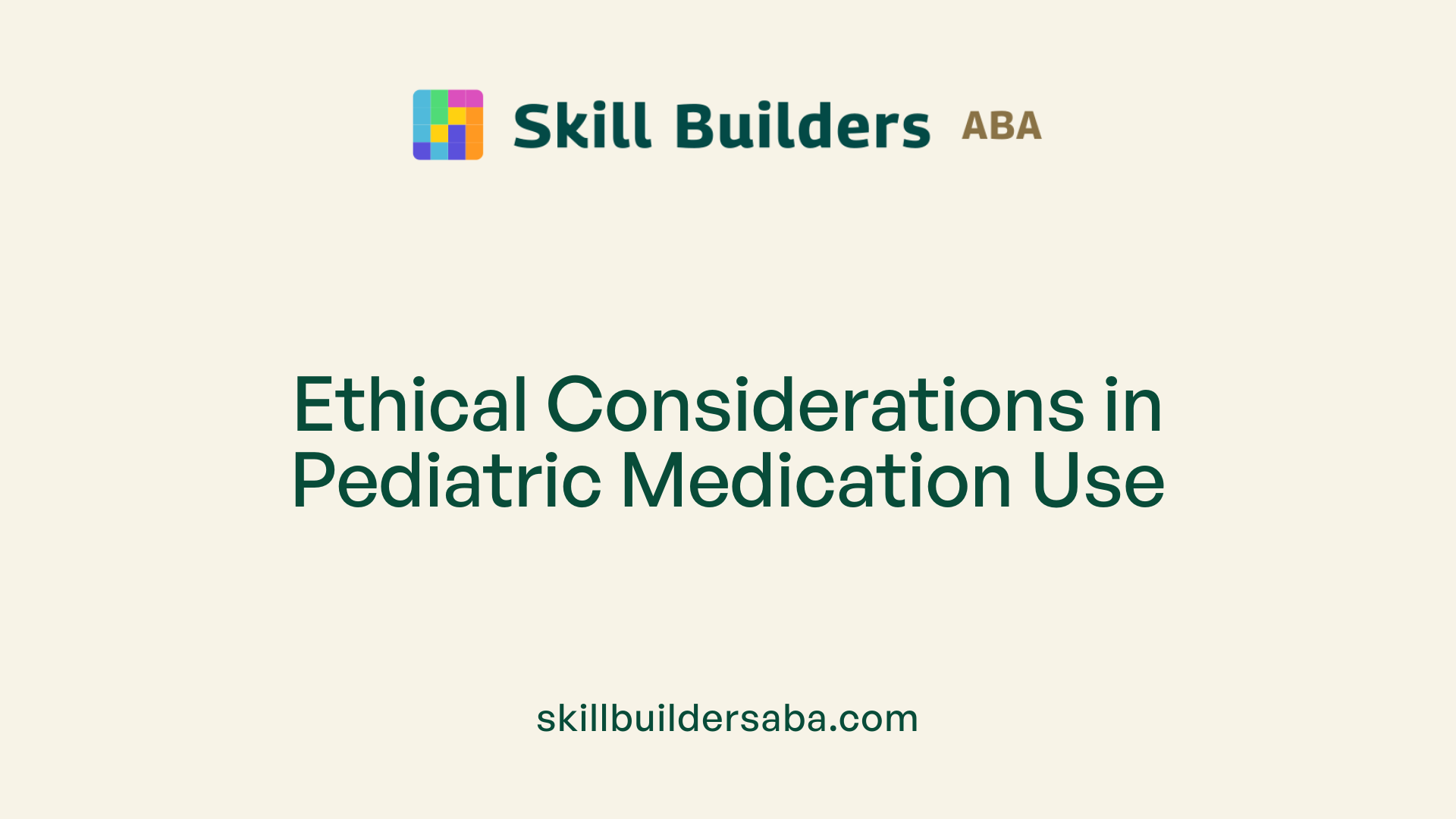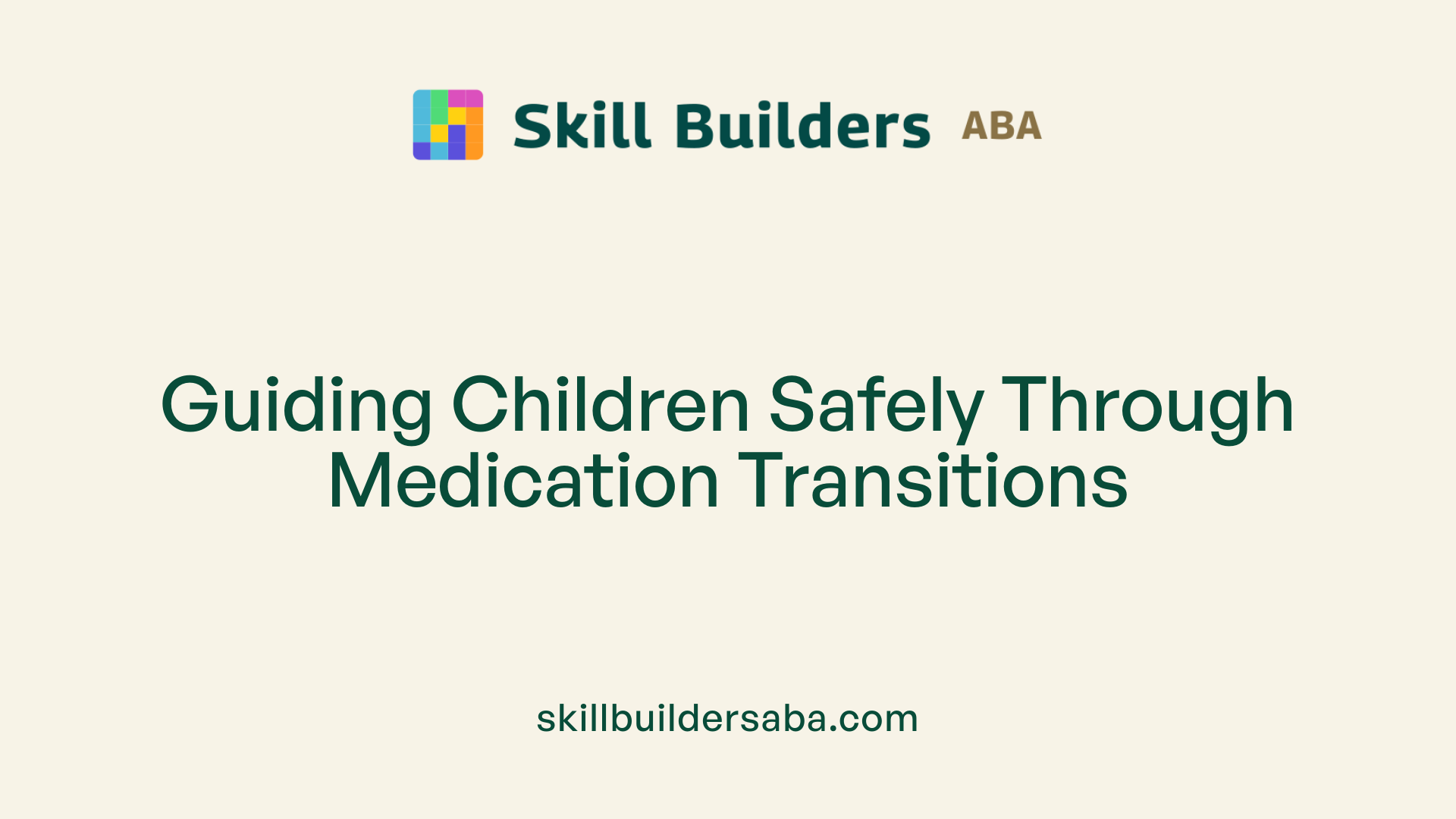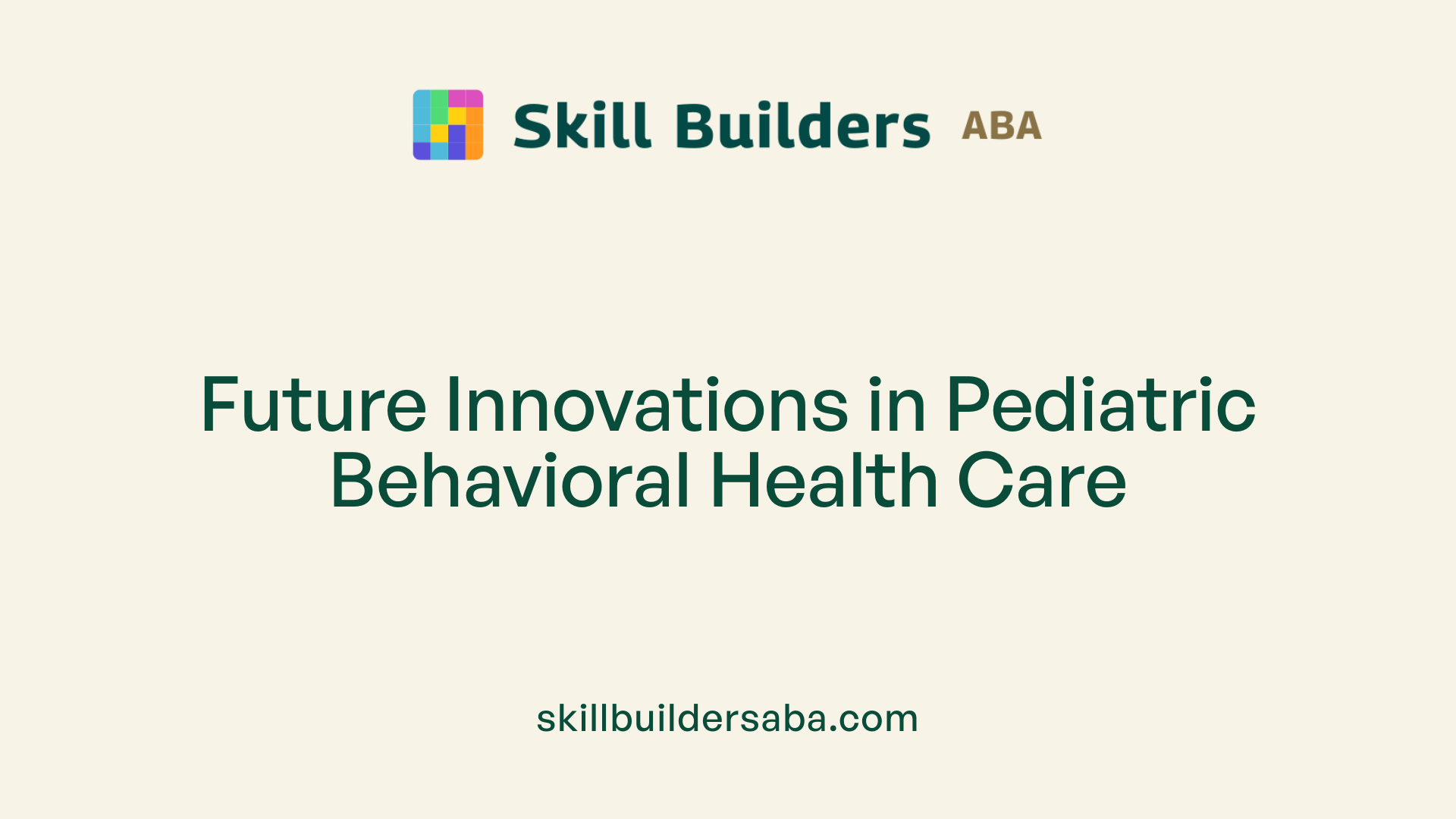
Supporting children through medication changes with behavior
Navigating Medication Transitions in Pediatric Behavioral Care
Understanding the Complex Process of Supporting Children Through Medication Changes
Supporting children during medication changes for behavioral health requires a comprehensive, informed approach that involves assessment, family participation, and consideration of broader treatment strategies. This article explores key considerations, strategies for caregivers, side effect management, ethical issues, trauma-informed care, and the integration of behavioral programs, providing a holistic view of pediatric medication support.
Key Considerations When Adjusting Medications in Children
What are the key considerations when adjusting medication for children with behavioral health issues?
Adjusting medication in children requires careful planning and ongoing oversight. Initially, a thorough assessment of the child's symptoms, functional impact, and any underlying conditions is essential to inform treatment decisions. This baseline helps determine whether medication adjustments are necessary.
Once treatment begins, close monitoring of the child's response is critical. Healthcare providers must observe not only how well symptoms improve but also any side effects or adverse reactions. For example, stimulants may carry cardiac risks, so cardiac health should be regularly checked. Similarly, rebound effects like hypertension should be tracked if the child is on certain medications such as alpha-2 agonists.
Medication adjustments should always be made by qualified professionals, such as child and adolescent psychiatrists, within a broader treatment plan. This plan often includes psychotherapy, behavioral interventions, and family involvement, ensuring a holistic approach to care.
Titration schedules must be individualized, usually involving slow dose increases and waiting periods of several weeks to assess effectiveness before making further changes. This careful process helps find the most effective dose with the fewest side effects.
Finally, ongoing communication with caregivers and healthcare teams is vital. It ensures that medication management remains safe and appropriate, considering factors like the child's age, developmental stage, and unique needs. Regular follow-ups, open discussions, and shared decision-making foster better outcomes and support a child's overall well-being.
| Consideration | Explanation | Additional Details |
|---|---|---|
| Initial Assessment | Conduct thorough evaluation of symptoms and underlying health variables | Includes physical exams and diagnostic tools |
| Monitoring Response & Side Effects | Track effectiveness and adverse reactions during treatment | Watch for behaviors, growth, physical health concerns |
| Qualified Provider Involvement | Ensure medication adjustments are made by trained professionals | Preferably a child psychiatrist or pediatrician |
| Individualized Titration Schedule | Customize dose increases based on child's response and needs | Usually involves gradual adjustments with time intervals |
| Communication with Caregivers | Maintain ongoing dialogue with family and healthcare team | Facilitates safe, effective, and tailored treatment |
This careful, informed approach helps ensure that medication adjustments support children’s health and behavioral progress effectively.
Supporting Children During Medication Changes

How can caregivers best support children during medication changes for behavioral health conditions?
Caregivers play a vital role in helping children navigate medication adjustments for behavioral or emotional issues. Open and honest communication with healthcare providers is essential. Parents and caregivers should ask questions about the purpose of the medication, potential side effects, and the specific monitoring plan.
Monitoring for adverse reactions is crucial. Caregivers should observe changes in mood, behavior, sleep patterns, appetite, or physical symptoms. Keeping a detailed record of these observations, including time, nature of changes, and any concerns, helps healthcare providers make informed decisions.
Supporting the child's overall mental health involves combining medication with psychological therapies such as behavioral interventions or counseling. These approaches address underlying issues and complement medication's symptom-management role.
Ensuring medication adherence and safety is a primary responsibility. Proper storage, correct dosing, and not altering the medication without medical guidance are critical. Caregivers should also watch for potential misuse or accidental ingestion, especially in households with other children.
Creating a nurturing and stable environment encourages emotional well-being. This includes maintaining routines, providing reassurance, and fostering open communication about feelings and concerns.
Finally, seeking early professional help if any troubling signs or setbacks occur ensures that the child's treatment remains effective. A collaborative approach involving healthcare professionals, mental health experts, and supportive family members optimizes outcomes during medication transitions.
Managing Side Effects of Pediatric Psychiatric Medications

What are some common side effects of psychiatric medications used in children, and how should they be managed?
Children prescribed psychiatric medications often experience side effects, which can vary depending on the type of medication. Common issues include sleep disturbances, changes in appetite—either increased hunger or decreased intake—as well as weight fluctuations. Mood swings, irritability, and fatigue are also frequently reported.
Specifically, antipsychotic medications may lead to movement disorders such as tics or tremors. Additionally, many psychotropic drugs carry metabolic risks, including increased potential for developing diabetes and dyslipidemia, which require careful management.
To address these side effects, it is crucial to implement close medical supervision. Regular health assessments should be conducted to monitor behavioral changes and physical health indicators. If adverse effects are observed, healthcare providers may need to adjust the dosage or temporarily discontinue the medication, always under professional guidance.
Polypharmacy, or the use of multiple medications, can exacerbate side effects. It increases the complexity of managing adverse reactions and raises the risk for drug interactions. Therefore, individualized treatment plans are essential, taking into account each child's unique response and health profile.
Ongoing evaluation and collaboration between parents, caregivers, and health professionals are vital in minimizing side effects, ensuring that medication benefits outweigh potential risks. This personalized approach helps maintain safety while effectively managing the child's behavioral or emotional challenges.
Given the ongoing development of children's brains and bodies, careful monitoring and tailored interventions are central to pediatric psychiatric care.
Ethical Principles in Pediatric Medication Prescribing

What ethical considerations should be taken into account when prescribing medication to children for behavioral issues?
Prescribing medication to children for behavioral problems involves careful ethical consideration. A primary aspect is obtaining informed consent from parents or guardians, ensuring they understand the potential benefits and risks associated with the treatment.
In addition to parental consent, clinicians should seek assent from the child when appropriate, respecting the child's developing autonomy and right to be involved in healthcare decisions. This involves explaining the treatment in developmentally appropriate language and ensuring the child feels comfortable with the proposed plan.
Safety and efficacy are central concerns. Since children's brains and bodies are still developing, the safety profile of psychotropic medications cannot be fully extrapolated from adult data. Therefore, a thorough risk-benefit analysis is essential before starting any medication, especially since some drugs may have unforeseen effects on a child's development.
Regulatory and ethical guidelines serve to protect vulnerable populations, including children. These guidelines emphasize minimizing unnecessary exposure, conducting comprehensive physical exams, blood tests, and continuous monitoring to catch adverse effects early.
Transparency is critical. Healthcare providers should communicate openly with families about all treatment options, including non-pharmacological interventions like therapy. When medications are used off-label, which is common in pediatric practice, clinicians must explain the rationale and potential risks involved.
Protection of the child's welfare extends to respecting legal rights, safeguarding confidentiality, and involving the child in age-appropriate discussions about their treatment. Continuous oversight and reassessment are necessary to ensure that the medication remains appropriate and effective.
In summary, the ethical approach to pediatric medication prescribing involves a multidisciplinary effort centered on informed decision-making, safety, transparency, and respecting the child's rights. Careful, personalized evaluation helps ensure that medication use benefits the child's overall well-being and aligns with established ethical standards.
Impact of Trauma-Informed Care on Treatment Strategies
How does trauma-informed care influence medication and behavioral health strategies in children?
Trauma-informed care (TIC) plays a significant role in shaping how healthcare providers approach treatment for children with behavioral or emotional challenges. This approach emphasizes creating a safe and trusting environment, which is essential for engaging children and their families effectively.
Understanding the neurobiological and psychological impacts of trauma helps clinicians tailor interventions that address the root causes of behavior rather than just managing symptoms. For example, trauma can alter brain development, affecting areas responsible for emotion regulation, impulse control, and memory. Recognizing these effects guides providers to consider not only medications but also psychosocial therapies that are specifically trauma-sensitive.
Screening and assessment protocols are crucial tools in TIC. Early trauma screening using validated tools allows clinicians to identify children with trauma histories and plan appropriate interventions. This process supports comprehensive evaluations that incorporate trauma-specific symptoms, ensuring that treatment plans are individualized.
Trauma-focused therapies, such as Trauma-Focused Cognitive Behavioral Therapy (TF-CBT), are often recommended as first-line treatments. These therapies directly address trauma-related symptoms and help children develop coping skills, resilience, and emotional regulation.
When considering medication, clinicians must weigh the trauma context carefully. While medications like antipsychotics, antidepressants, or stimulants can help manage symptoms, they are used within a broader, trauma-informed framework. Proper monitoring, dosage adjustment, and ongoing assessment are vital, as trauma can impact medication response and side effect profiles.
Organizational culture and staff training are central to effective TIC. Facilities must foster an environment where all team members understand trauma's effects and are trained to deliver sensitive care. This includes strategies for de-escalation, communication, and avoiding re-traumatization.
In summary, trauma-informed care influences treatment by integrating assessments, therapies, and medication management into an empathetic, holistic approach. It enhances treatment engagement, adherence, and effectiveness, leading to better long-term outcomes for children affected by trauma.
Integrating Behavioral Programs with Medication Management
What role do behavioral programs and interventions play alongside medication in managing childhood behavioral issues?
Behavioral programs and interventions serve an essential function when combined with medication in addressing childhood behavioral challenges. These programs focus on directly modifying problematic behaviors and teaching children social-emotional skills through evidence-based techniques such as behavior therapy, parent training, and social skills development.
By targeting underlying behaviors, behavioral interventions help children develop healthier ways to cope and interact, which can be especially beneficial for conditions like ADHD, oppositional defiant disorder (ODD), and trauma-related issues. They are adaptable to various environments—including homes, schools, and community settings—allowing for a comprehensive and consistent approach.
Implementing behavioral strategies early in treatment can lead to noticeable improvements at home, in school, and among peers. For example, skill-building in problem-solving, self-regulation, and communication can reduce disruptive actions and enhance social skills.
When combined with medication, behavioral programs create a more holistic treatment plan. Medications can help manage specific symptoms quickly, while behavioral interventions work on long-term behavior change, making the overall treatment more effective.
Furthermore, integrating these approaches involves active participation by families, caregivers, and community programs, reinforcing positive behaviors and supporting ongoing progress. This combined methodology helps children achieve better emotional and social functioning, supporting their growth into resilient, adaptive individuals.
Supporting Transition and Discontinuation of Medication

How should discontinuation or medication transition be approached in pediatric behavioral health?
Discontinuing or transitioning medications in children requires a careful, step-by-step process guided by evidence-based practices. It’s essential to avoid abrupt stopping, which could cause withdrawal symptoms or a relapse of behavioral issues.
A common approach involves gradual tapering, where the child’s dose is gradually decreased over weeks or even months. This slow reduction allows the child's body and brain to adjust to the changes and reduces the risk of rebound or worsening symptoms.
Monitoring and ongoing assessment are critical during this period. Healthcare providers frequently review the child's behavioral and emotional state, physical health, and any side effects. They may use standardized scales or clinical observations to determine if symptoms are re-emerging.
It is important to involve the child’s caregivers in this process. Parents and educators should be informed about what to expect and how to observe any changes. Maintaining open communication helps to quickly address concerns.
Evidence suggests that a structured, cautious approach to discontinuation enhances safety and effectiveness. For instance, in cases where medication is no longer needed or when side effects outweigh benefits, a doctor might recommend starting with small dose reductions, followed by close follow-up.
Referral to specialists such as child psychiatrists may be needed if the case is complex or if multiple medications are involved. These professionals can provide advanced guidance and ensure the child's safety throughout the process.
Overall, the goal is to minimize disruptions in the child's life, avoid unnecessary distress, and ensure that alternative supports like behavioral therapies continue to sustain progress. A comprehensive plan, including regular physical health checks and behavioral assessments, facilitates a smooth transition and ultimate discontinuation when appropriate.
Enhancing Parental and Caregiver Involvement in Treatment Plans
How can healthcare providers involve parents and caregivers in medication management for children with behavioral health issues?
Involving parents and caregivers effectively in medication management is crucial for successful treatment outcomes. Healthcare providers can start by offering clear, understandable education about the child's medication. Using plain language, visual aids, and teach-back methods ensures that caregivers grasp the purpose, dosing, and possible side effects of medications.
Ongoing communication is essential. Providers should regularly follow up beyond initial prescriptions to address challenges such as managing complex schedules, dealing with child refusal, or tracking side effects. These conversations help adapt treatment plans and strengthen caregiver confidence.
Shared decision-making is a vital component. Engaging caregivers in discussions about benefits, risks, and preferences fosters a collaborative environment. Respecting their beliefs and addressing concerns about side effects build trust and improve adherence.
Cultural sensitivity plays a significant role. Providers should adopt culturally competent approaches, especially for caregivers from diverse racial and ethnic backgrounds, to ensure recommendations are respectful and relevant.
To reduce errors and conflicting instructions, standardized counseling protocols and accurate documentation in electronic health records are necessary. Coordination among primary care providers, specialists, and pharmacists can prevent miscommunication.
Finally, supplying caregivers with reputable pediatric medication resources and encouraging questions promotes informed participation. When caregivers feel supported with reliable information and open communication, they are more likely to follow treatment plans faithfully, ensuring the child's safety and well-being.
Summary and Future Directions
 Supporting children through medication changes with behavior requires a comprehensive, multidisciplinary approach. It involves thorough assessments, active family participation, trauma-informed care, and integrating behavioral interventions with medication management. Monitoring for side effects and ensuring ethical prescribing practices are crucial to safeguard children’s health and well-being.
Supporting children through medication changes with behavior requires a comprehensive, multidisciplinary approach. It involves thorough assessments, active family participation, trauma-informed care, and integrating behavioral interventions with medication management. Monitoring for side effects and ensuring ethical prescribing practices are crucial to safeguard children’s health and well-being.
Research highlights that combining medication with evidence-based behavioral programs enhances treatment success. Incorporating trauma-sensitive strategies is especially important for children with complex emotional or behavioral needs. Looking ahead, advancing caregiver education will empower parents and guardians to make informed decisions and advocate effectively.
Innovations in technology, such as telehealth, can expand access to specialized support and facilitate ongoing monitoring and consultation. Establishing clear policies that prioritize safety, individualized treatment plans, and ethical standards is essential for responsible medication use.
Future efforts should focus on refining clinical protocols, improving outcomes through research, and ensuring that medication management is tailored to each child's unique needs. By integrating these strategies, the healthcare system can better support children and families navigating behavioral health treatments.
The Path Forward in Pediatric Behavioral Medication Support
Supporting children through medication changes in behavioral health requires a careful, ethical, and compassionate approach that combines clinical expertise with family-centered care. By integrating behavioral strategies, trauma-informed practices, and comprehensive support systems, healthcare providers and caregivers can facilitate smoother transitions, minimize adverse effects, and promote overall well-being. Continued research, education, and policy development are crucial to advancing safe, effective, and holistic mental health treatment for children.
References
- Talking with your child's pediatrician about behavioral ...
- medications used for behavioral & emotional disorders a ...
- Prescribing for Behavior - AMA Journal of Ethics
- Changing Parental Knowledge and Treatment Acceptance ...
- The Importance of Medication Adherence for Children
- Managing Medication
- Children Exposed to Maltreatment: Assessment and the Role ...
- Clinical Strategies for Integrating Medication Interventions ...
- How Behavioral Programs Can Benefit Children
- Talking with your child's pediatrician about behavioral ...
Reach Out Today
Learn more about how we can support your child’s growth and development. Contact us to discuss our services and availability in your area.
.svg)